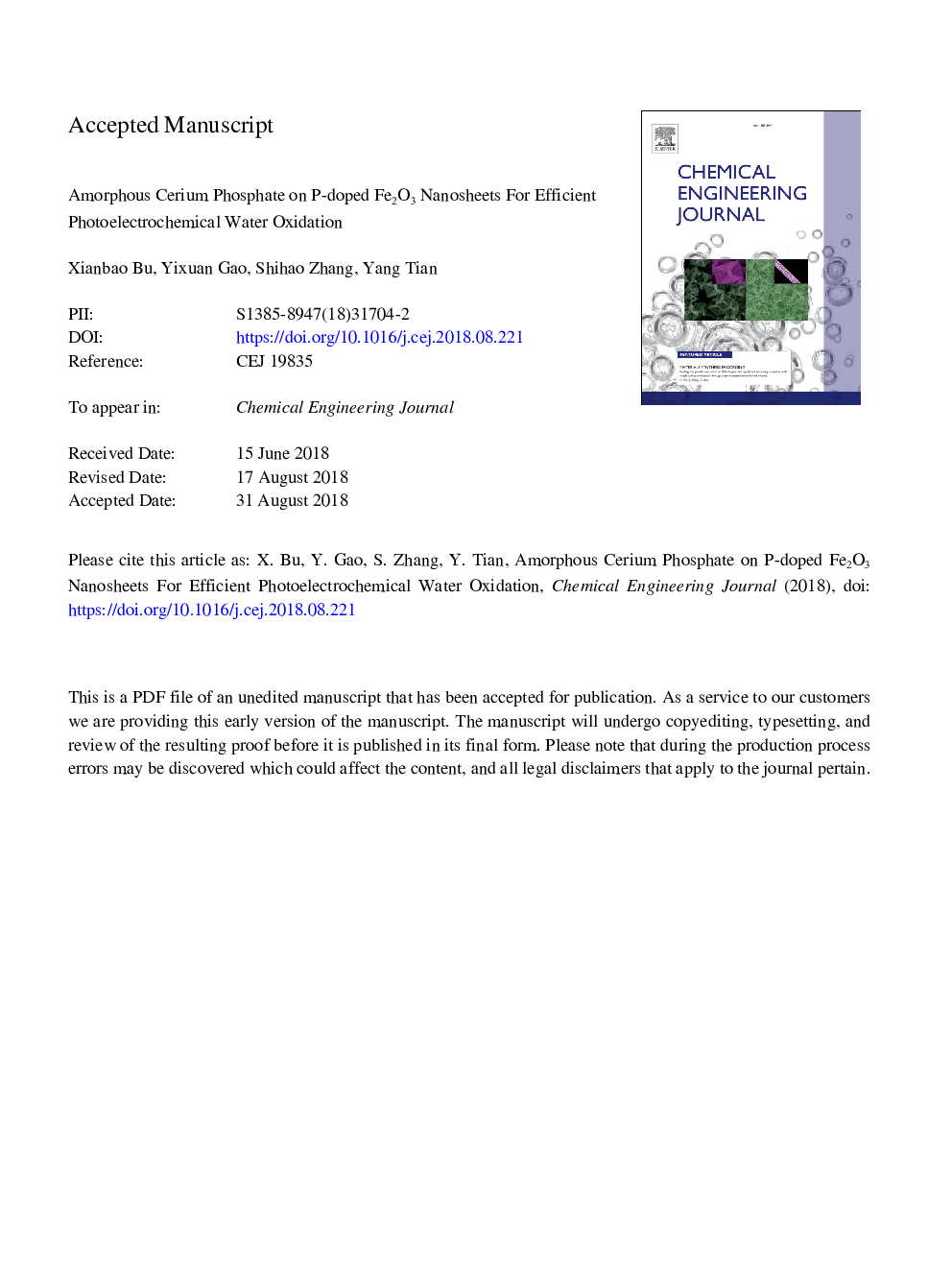| Article ID | Journal | Published Year | Pages | File Type |
|---|---|---|---|---|
| 10131060 | Chemical Engineering Journal | 2019 | 37 Pages |
Abstract
Hematite (α-Fe2O3) is a promising material for photoelectrochemical (PEC) water splitting. However, its low carrier mobility and extremely high charge recombination rate limits its practical application for PEC water splitting. Herein, we report the design and synthesis of a new co-catalyst, amorphous CexPO4 nanoparticles, on a P-doped α-Fe2O3 nanosheet photoanode. As a new type of co-catalyst, the CexPO4 nanoparticles were beneficial for depressing charge recombination and enhancing the reaction kinetics of O2 evolution at the interface between the co-catalyst and electrolyte. As a result, the P-doped Fe2O3 loaded with the CexPO4 co-catalyst showed high activity as a photoanode material for photoelectrochemical water oxidation. The photocurrent density exceeded 1.24â¯mA·cmâ2 at 1.23 versus reversible hydrogen electrode (RHE) under an irradiation of 100â¯mWcmâ2, which was 3.5- and 1.4-fold higher than those obtained for the pristine hematite nanosheets and the P-doped hematite nanosheet photoanodes, respectively. Further investigations confirmed that the amorphous CexPO4 co-catalyst favorably induced charge transfer and water oxidation in the PEC cell. This work highlights an effective strategy for the design and fabrication of a rare-earth-based co-catalyst for PEC water splitting.
Related Topics
Physical Sciences and Engineering
Chemical Engineering
Chemical Engineering (General)
Authors
Xianbao Bu, Yixuan Gao, Shihao Zhang, Yang Tian,
